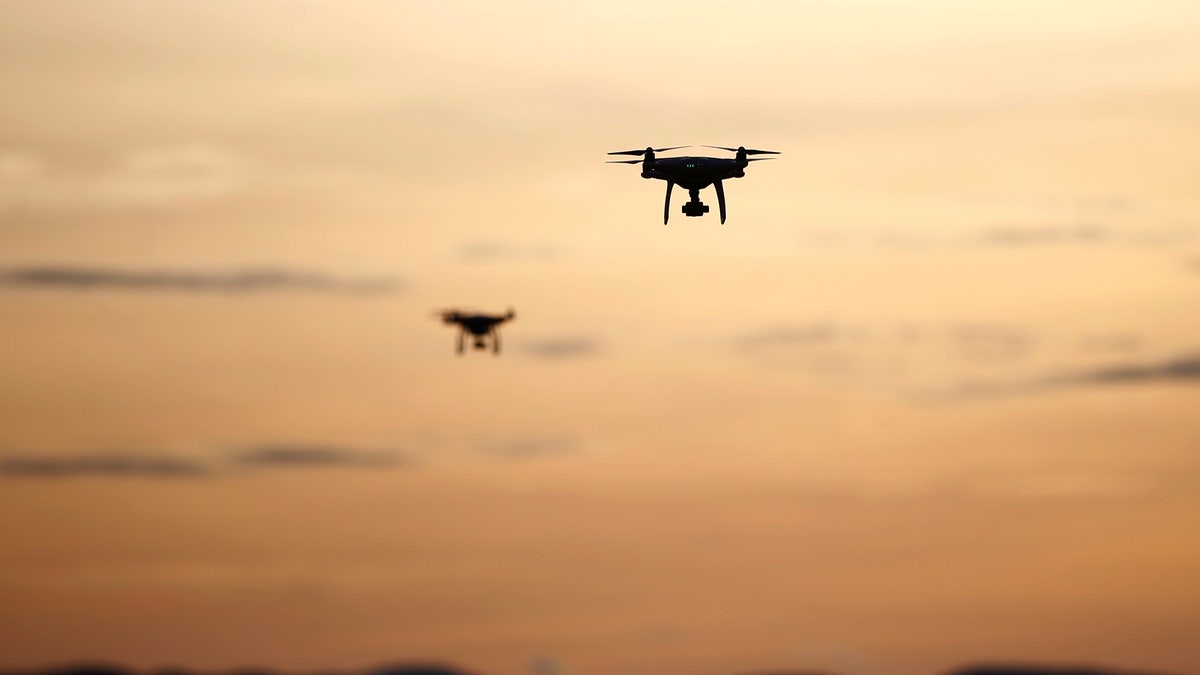
File photo: Drones fly above smog blanketed Zenica, Bosnia and Herzegovina December 25, 2016. (REUTERS/Dado Ruvic)
Besides government regulations, bad weather, weight restrictions, and all the other issues that plague Amazon's budding drone delivery service, the company must also face the prospect of thieves shooting down drones to steal their packages.
It's a problem that Amazon has been working on since at least 2014, when it filed a patent for "countermeasures" to protect drones against everything from gunshots to hackers breaching its navigation software. The patent was approved last week, GeekWire reported, offering insight into how Amazon intends to safeguard drone-borne packages of the future.
The patent describes two main lines of defense for the drones. The first are electronic systems designed to detect signal jammers or other hacking attempts, including a backup communications interface if the primary one is compromised. Much like current wireless routers and cell phones, the system would automatically select whichever frequency is least prone to interference.
If hackers do manage to take control of a drone, Amazon would receive an alert and could dispatch a second drone to the scene. The rescue drone would resume control by accessing a backup "compromise module" in order to guide the stricken drone to a safe landing area.
More From PCmag
Guarding against physical threats like missiles, meanwhile, is where Amazon's engineers really get creative. If a drone is hit, it could deploy an airbag, foam, a parachute, a bumper, or configure one or more rotors for autorotation. And the precautions don't stop with guns: Amazon is preparing for a scenario in which someone could use a bow and arrow to attempt a drone shootdown. Even if the arrow misses, the drone could still detect an anomaly and immediately land in a safe area.
As with all patents, there's no guarantee that the defenses Amazon describes will end up in its eventual drone delivery fleet. There's also no guarantee that there will even be a fleet at all: the FAA dragged its feet on giving Amazon permission to test out unmanned aircraft for delivery purposes, causing the Seattle-based tech giant to perform its first drone delivery in the UK instead earlier this month.
This article originally appeared on PCMag.com.
